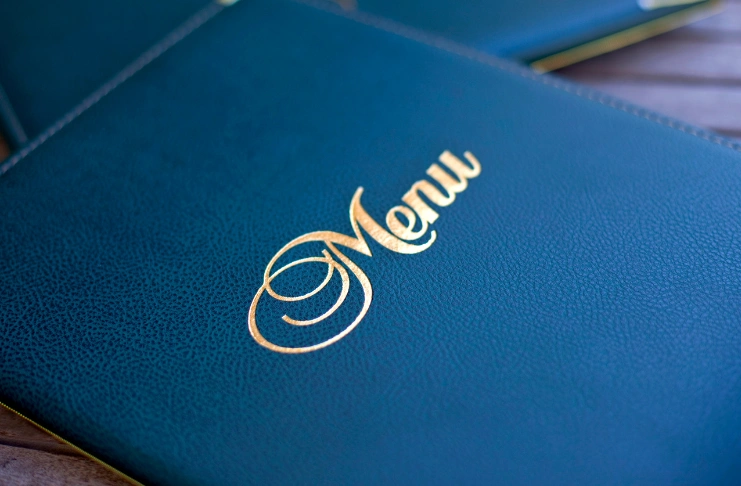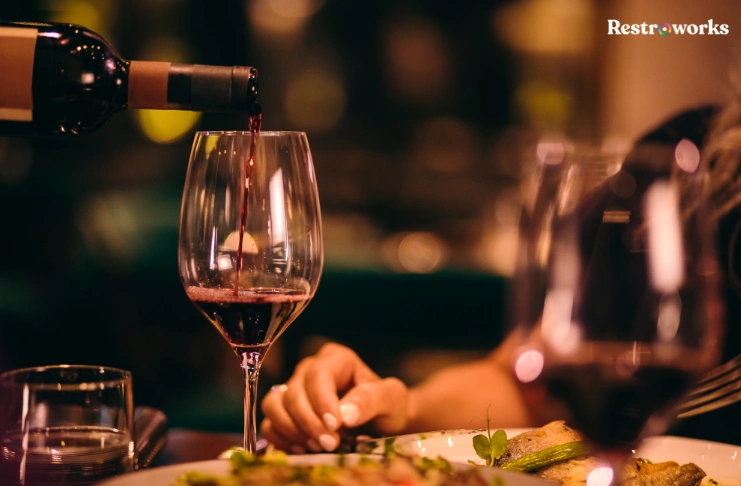
In 2024, the U.S. fine dining industry continues to define itself through unparalleled service and exclusive culinary experiences. As the industry sees an uptick in revenue with restaurant sales poised to exceed $1 trillion, fine dining establishments remain coveted destinations for those seeking sophistication and exceptional dining encounters (NRA).
As the restaurant industry evolves, the significance of the marketing plan for fine-dining restaurants becomes ever more critical. Establishments are adopting advanced fine dining marketing ideas, focusing on digital sophistication and high personalization to distinguish their offerings. This strategic marketing is essential in maintaining the exclusivity and luxury that these high-end establishments are known for. Effective social media marketing and targeted marketing campaigns are crucial components of successful fine dining restaurant marketing ideas, ensuring these restaurants attract and retain their discerning clientele.
1. Creating a luxurious brand experience
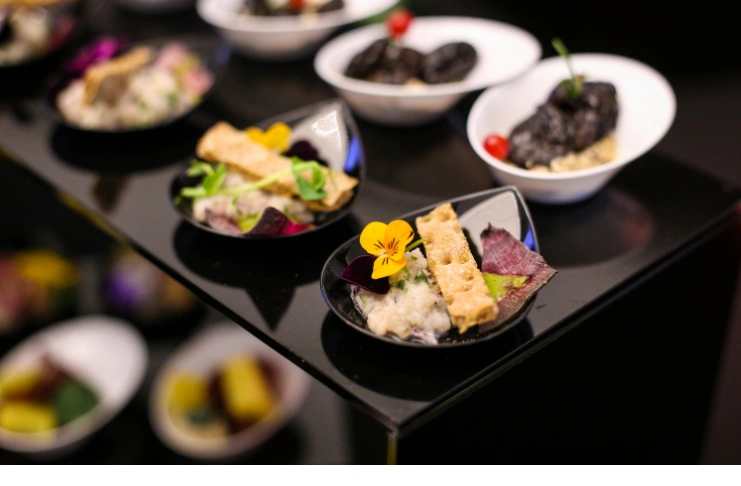
Creating a luxurious brand experience in the fine dining industry hinges on meticulous attention to detail and personalized service, which forge a memorable ambiance that appeals to discerning diners. At establishments like InterContinental Hotels & Resorts, luxury is exemplified through bespoke dining environments catering to guests and locals seeking premium options. This level of customization extends from the texture of cutlery and glassware to the culinary expertise displayed in dish presentation, ensuring every aspect contributes to an elite dining experience. This approach is a cornerstone of a robust restaurant marketing strategy for fine dining restaurants.
Restaurant owners understand that a strong social media presence is essential in today’s digital age. By incorporating social media posts that highlight these luxurious details and unique dining experiences, they can effectively engage with their target audience. These marketing initiatives not only attract new patrons but also retain existing customers, solidifying their position in the competitive restaurant business.
Implementation tip
-
Experiential Dining: Elevate your restaurant experience by embracing the trend of experiential dining. Create immersive experiences that go beyond the traditional dining setup. This could include interactive elements like chef’s table experiences, wine pairing sessions, or live cooking demonstrations. These engaging sessions add a unique touch and deeply draw customers, making their visit unforgettable and highly shareable on social media.
-
Focus on detail and personalization: Prioritize meticulous attention to detail in every aspect, from the selection of tableware to the ambiance and decor. Ensure that everything reflects the high standard of luxury expected in fine dining.
-
Staff training: Regularly train your staff to understand and deliver personalized, high-standard services that cater to each guest’s nuanced needs.
-
Host exclusive events: Organize exclusive tasting events or preview nights that allow guests to experience the restaurant’s offerings in a unique setting and provide you with direct feedback to refine your offerings.
Track and Optimize:
-
Customer Satisfaction Surveys: Conduct surveys regularly to gauge customer satisfaction regarding their dining experience. Questions should cover various aspects of the luxury experience, including ambiance, service quality, and food presentation.
-
Mystery Shoppers: Employ mystery shoppers to evaluate the dining experience from a customer’s perspective. This can provide unbiased feedback on service standards and overall ambiance.
-
Staff Performance Reviews: Monitor and review staff performance regularly to ensure they deliver personalized and high-standard services. Implement ongoing training programs based on performance metrics.
-
Event Feedback: Gather feedback from guests who attend exclusive events to understand their experience and identify areas for improvement.
Case study: Publico Ristorante, InterContinental Singapore Robertson Quay
This establishment is renowned for its luxurious dining experience, which focuses on intricate details and customized experiences. The space’s design and the chef’s culinary creativity are crucial in elevating the guests’ dining journey. Every element, from the ambiance to the presentation of the dishes, is meticulously crafted to ensure a high-end, memorable experience for every diner.
2. Leveraging high-quality visual content
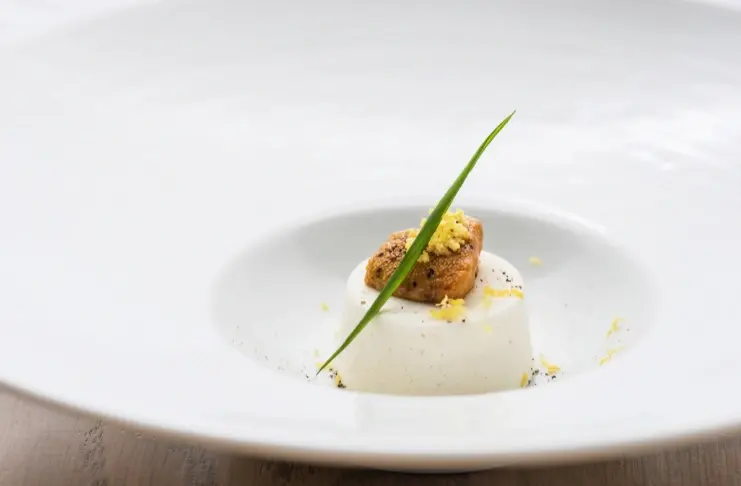
In the digital age, the visual representation of a fine dining restaurant is crucial, as it often serves as the first point of contact with potential guests. High-quality visual content, including professionally taken photographs and well-produced videos, can significantly attract and engage potential diners by showcasing the restaurant’s unique dishes, elegant atmosphere, and dining experience it offers. This visual content is not just for decoration but is a crucial marketing strategy for fine dining restaurants, conveying the restaurant’s story and ambiance to the audience.
Implementation tip
-
Collaborate with professionals: Work with professional photographers and videographers to capture the essence of your dining experience. Ensure that the visuals align with your brand’s luxury image.
-
Promote across channels: Use these high-quality images and videos across all your marketing channels—social media, your official website, and promotional materials—to maintain a cohesive and attractive brand image.
-
Update content regularly: Keep your visual content fresh and updated to reflect seasonal changes or new menu items, maintaining interest and engagement from your audience.
Track and Optimize:
-
Engagement Metrics: Use tools like Google Analytics and social media insights to track engagement metrics, such as likes, shares, comments, and click-through rates on visual content.
-
A/B Testing: Conduct A/B testing on different types of visual content to determine what resonates best with your audience. Test variables such as image style, video length, and content themes.
-
Content Calendar: Maintain a content calendar to ensure regular updates and seasonal changes are reflected in your visual content. Monitor the performance of each post to identify the best times and types of content to publish.
-
User-Generated Content: Encourage customers to share photos and videos of their dining experiences. Track the engagement and reach of user-generated content to understand its impact on brand visibility.
Case study: ‘The Shed’
A conceptual fine-dining restaurant, The Shed distinguishes itself by using high-quality visual content to tell its story. The restaurant utilizes local organic ingredients and seasonal menus, highlighted through vivid imagery. This approach appeals to guests interested in quality and sustainability and helps the restaurant stand out in a competitive market.
3. Personalized customer engagement
Personalized customer engagement in fine dining is pivotal in enhancing guest satisfaction and fostering loyalty. Utilizing Customer Data Platforms (CDPs) can be a game changer. These platforms collect and analyze data from various customer interactions to offer a tailored dining experience. For example, knowing a returning customer’s favorite dish or noting a special occasion like an anniversary can personalize their experience significantly, making them feel valued and likely to return. This approach is a fundamental part of the marketing strategy for fine dining restaurants, where personalization drives customer loyalty and satisfaction.
Implementation tip
-
Utilize data platforms: Implement Customer Data Platforms (CDPs) to gather and analyze customer preferences and history data, enabling highly personalized service.
-
Train for recognition: Train your staff to recognize returning customers and their preferences, enhancing the personalized touch during their visit.
-
Use personalized communications: Employ personalized communication tools such as email marketing to send customized messages for birthdays, anniversaries, or special offers. This can help drive repeat business and deepen customer relationships.
Track and Optimize:
-
Customer Data Platforms (CDPs): Use CDPs to collect and analyze customer data, tracking preferences and behaviors to offer tailored experiences.
-
Email Campaign Analytics: Monitor the performance of personalized email campaigns, including open rates, click-through rates, and conversion rates. Use these insights to refine messaging and offers.
-
Loyalty Program Metrics: Track metrics such as enrollment rates, participation rates, and reward redemption to evaluate the effectiveness of loyalty programs.
-
Feedback and Reviews: Regularly review customer feedback and online reviews to understand their experiences and identify opportunities for further personalization.
Case study: QDOBA
QDOBA, a Mexican food brand redesigned their online ordering system to allow customers to personalize their meals just as they would in the restaurant, such as adjusting the amount of toppings like cheese or guacamole. This personalization in the digital realm mirrored the in-store experience, creating a seamless customer journey across digital and physical spaces, thereby enhancing customer satisfaction and loyalty (Restaurant Technology News).
4. Innovative use of technology
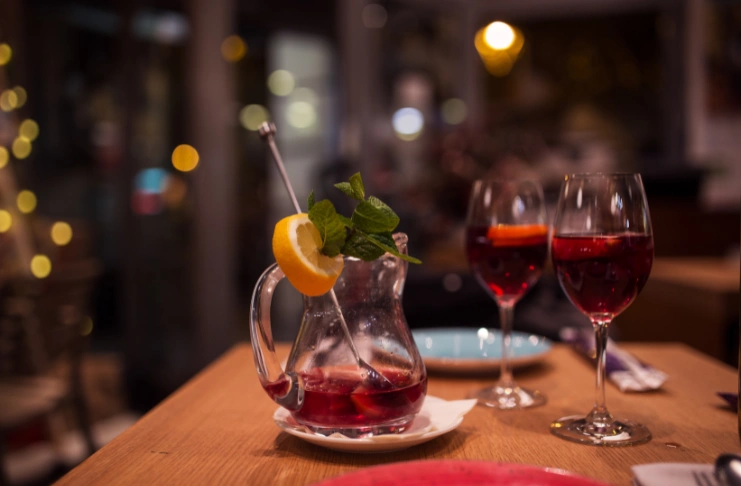
The integration of tech in fine dining transforms customer interactions by enabling a deeper understanding of customer preferences and behavior. AI can analyze data from various sources to predict what customers might enjoy, allowing restaurants to tailor recommendations and enhance the dining experience. For instance, digital tablet menus can offer personalized wine pairings or suggest dishes based on past orders, which not only delights the customer but also increases sales. Incorporating these elements into a fine dining restaurant marketing ideas portfolio can significantly impact the establishment’s success.
Implementation tip
-
Upgrade to smart kitchen systems: Install smart ovens and connected kitchen appliances that can automate cooking processes and ensure precision in culinary techniques.
-
Adopt Kitchen Display Systems (KDS): Implement KDS to improve communication between the front of house and kitchen staff and ensure that food orders are prepared efficiently and accurately.
-
Explore voice-activated ordering: Consider integrating voice-activated systems for taking orders to streamline operations and reduce the burden on staff during peak hours.
Track and Optimize:
-
Technology Utilization Reports: Monitor the usage of technological tools such as smart kitchen systems, digital menus, and voice-activated ordering systems. Track metrics such as order accuracy, preparation times, and customer feedback on these innovations.
-
Customer Interaction Data: Analyze data from customer interactions with digital menus and ordering systems to understand preferences and improve recommendations.
-
Operational Efficiency Metrics: Track metrics such as kitchen efficiency, table turnover rates, and staff productivity to assess the impact of technology on operations.
-
Feedback Loops: Regularly collect feedback from both customers and staff on the use of technology. Use this feedback to make necessary adjustments and improvements.
Case study: Applebee’s and Barcelona Wine Bar
Applebee’s has integrated technology to enhance guest experiences through convenience, such as using tablets for quicker transactions which frees up servers to provide better customer service. They’ve also explored off-premises opportunities, enhancing their online ordering and delivery capabilities. While cautious with tech integration, Barcelona Wine Bar has judiciously employed technology to improve operational efficiency without undermining guest interaction, maintaining a balance between high-tech and high-touch service approaches.
5. Seasonal menus and exclusive events
Seasonal menus: Embracing seasonal menus allows fine dining restaurants to offer fresh, vibrant dishes that reflect the best of the current season. This approach enhances the flavor and quality of the meals and supports local agriculture, providing a story that resonates with environmentally conscious diners. Seasonal menus create a sense of urgency and novelty, encouraging diners to return frequently to experience the new options before they are gone.
To effectively implement a seasonal menu, it’s crucial to establish strong connections with local suppliers to ensure access to the freshest ingredients. Updating the menu to reflect seasonal availability can keep the offerings exciting and dynamic. This strategy should be a key element of the marketing plan for fine dining restaurants, as it appeals directly to diners seeking unique and sustainable dining options.
Implementation tip
-
Digital menu updates: Use dynamic digital menu boards that can be quickly updated to reflect changes in the seasonal menu, reducing print costs and ensuring customers have up-to-date options.
-
Event-specific mobile apps: Develop temporary mobile applications for larger events to guide guests through the event schedule, menu options, and additional activities or promotions.
-
Virtual reality previews: To engage customers and build anticipation, provide virtual reality previews of upcoming seasonal dishes or events.
Track and Optimize:
-
Sales Data Analysis: Monitor sales data to understand seasonal dishes’ popularity and exclusive events’ impact on overall revenue.
-
Customer Feedback: Collect feedback from guests on seasonal menus and events to gauge satisfaction and identify areas for improvement.
-
Event Attendance Metrics: Track attendance rates for exclusive events and analyze engagement levels to determine their success.
-
Supplier Performance: Evaluate the performance of local suppliers to ensure consistent quality and timely delivery of seasonal ingredients.
Case study: ABC Kitchen, New York City
ABC Kitchen uses seasonal menus to emphasize local produce and sustainable ingredients, creating a unique dining experience that resonates with environmentally conscious diners. Their approach not only showcases the freshness and quality of the ingredients but also supports local agriculture, making the restaurant a leader in sustainable dining. This case exemplifies how embracing local and seasonal resources can enhance a restaurant’s appeal and customer loyalty.
6. Strategic partnerships and collaborations
Strategic Partnerships: Collaborations with other brands, local artists, or produce suppliers can open new avenues for fine dining restaurants to enhance their offerings and reach. Partnerships might involve exclusive events, guest chef nights, or sourcing rare ingredients that can provide a unique dining experience not available elsewhere. These collaborations can also extend to marketing efforts, where two brands come together to co-promote each other’s offerings, thus reaching a broader audience. Such strategic partnerships are vital to a fine dining restaurant marketing plan, enhancing brand visibility and creating unique value propositions for potential diners.
Implementation tip
-
Shared digital campaigns: Develop digital marketing campaigns with partners to co-promote events, combining customer bases and resources for more effective reach.
-
Cross-promotional loyalty rewards: Create a joint loyalty program that rewards customers for patronage at any of the partner venues, encouraging cross-visitation and increased engagement.
-
Interactive co-branding content: Use interactive web content or apps that merge the culinary styles or thematic elements of both partners, offering users recipes, behind-the-scenes videos, or co-hosted webinars.
Track and Optimize
-
Shared Analytics Platforms: Collaborate with your partners to share data and insights. Use analytics tools to monitor the effectiveness of co-branded campaigns, track customer engagement, and assess the ROI of joint marketing efforts.
-
Customer Feedback: Collect and analyze customer feedback on partnered events or products. Use surveys and direct feedback to understand customer satisfaction and areas for improvement.
-
Performance Metrics: Monitor website traffic, social media engagement, and sales figures before, during, and after partnership initiatives to gauge their impact.
Case study: De Librije, Netherlands
Chef Jonnie Boer of De Librije has long embraced local sourcing as a cornerstone of his restaurant’s philosophy, well before it became a popular trend. By focusing on local produce and innovative culinary techniques, Chef Boer has created a distinctive and high-quality dining experience that highlights the natural flavors of the region. This approach has sustained high culinary standards, fostered strong community ties, and sustained a three-Michelin-star rating since 2004.
7. Focused online marketing strategies
Effective online marketing strategies are crucial for fine-dining restaurants to attract and retain a sophisticated clientele. A robust digital presence begins with a mobile-optimized website, ensuring potential customers experience seamless navigation and interaction, regardless of their device. This is particularly important as many consumers discover restaurants via mobile devices, with decisions heavily influenced by online content and ease of information access.
Implementation tip
-
Optimize content for mobile users: Given the high usage of mobile devices for restaurant searches, ensure your content is responsive and visually appealing on all devices.
-
Leverage Geo-Targeting: Use geo-targeted advertising to reach potential customers in specific locations, enhancing the relevance and effectiveness of your ads.
-
Integrate with reservation systems: Seamlessly integrate your marketing platforms with reservation systems to allow instant bookings from the marketing content.
Track and Optimize
-
Website Analytics: Use tools like Google Analytics to monitor website traffic, user behavior, and conversion rates. Track metrics such as page views, session duration, and bounce rates to understand user engagement.
-
Ad Performance: Review the performance of geo-targeted ads on platforms like Google Ads and social media regularly. Track metrics like click-through rates (CTR), cost per click (CPC), and conversion rates to optimize ad spend.
-
SEO Monitoring: Use SEO tools to track keyword rankings, organic traffic, and backlink profiles. Regularly update your content and optimize for mobile users to maintain high visibility in search results.
Case study: Pujol
A well-optimized mobile website is essential for fine dining establishments like Pujol. Pujol, a high-profile restaurant in Mexico City known for its refined Mexican cuisine, has crafted a website that blends elegance and simplicity. The website features a minimalist design with a clay-green background and grayscale images, creating a modern and upscale atmosphere. The straightforward layout provides easy access to essential information like menus and reservation links, emphasizing user-friendly navigation on mobile devices, which is critical as many restaurant interactions start from mobile searches.
8. Reputation management and social proof

A restaurant’s reputation can be its most valuable asset in the fine dining. Managing this reputation involves meticulous attention to customer feedback and active engagement on various online platforms. Utilizing platforms like Google, Yelp, and TripAdvisor to gather and respond to customer reviews is crucial. Positive reviews can attract new customers, while effectively managing negative feedback can prevent potential damage to the restaurant’s image. Effective reputation management should be a key aspect of any fine dining restaurant marketing plan, as it directly influences customer perceptions and business success
Implementation tip
-
Automate review responses: Use automated tools to manage and respond to reviews efficiently, ensuring timely and consistent communication with your customers.
-
Leverage user-generated content: Encourage satisfied customers to share their experiences online and use their testimonials in your marketing materials to build trust and authenticity.
-
Implement continuous monitoring: Regularly monitor your online presence to quickly address negative feedback and effectively manage your restaurant’s reputation.
Track and Optimize
-
Review Monitoring Tools: Utilize tools like Google Alerts, Yelp, and TripAdvisor to monitor reviews and mentions of your restaurant. Set up notifications to stay updated on new reviews and feedback.
-
Sentiment Analysis: Use sentiment analysis tools to gauge customer sentiment across reviews and social media. This can help identify common themes and areas needing improvement.
-
Engagement Metrics: Track engagement metrics such as review response rates, average review scores, and the volume of user-generated content. Regularly responding to reviews can enhance your restaurant’s reputation.
Case study: Girl & The Goat
Implementing effective reputation management and social proof is crucial for fine dining venues. A notable example is the approach taken by New York City’s Girl and the Goat. The restaurant leverages its website design to enhance its online presence and reputation. Featuring a sleek side navigation bar, the website includes high-quality images and well-organized content that makes it easy for visitors to navigate. This design not only enhances user experience but also aids in managing the restaurant’s reputation by presenting a polished and professional image online.
9. Exclusive membership & loyalty programs
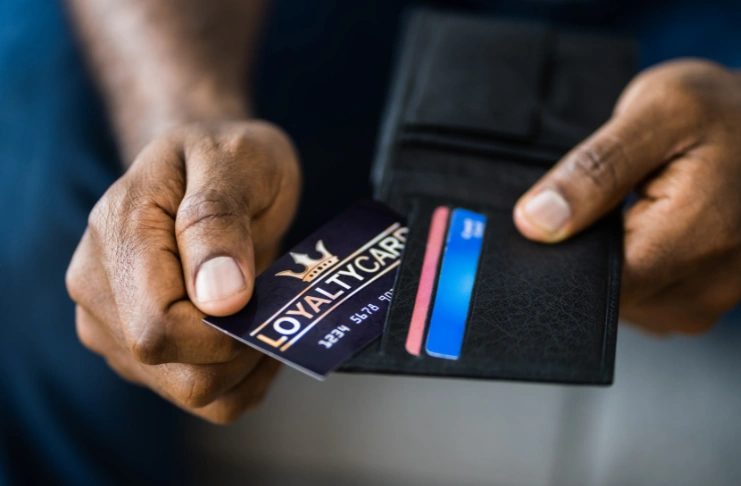
Exclusive Membership and Loyalty Programs are essential for fine dining establishments aiming to enhance guest loyalty and increase repeat business. These programs can be structured to provide tiered benefits, including priority reservations, exclusive events, and special menu previews. For instance, programs that integrate rewards for frequent visits or high spending can significantly elevate the customer experience and foster a sense of exclusivity and prestige.
Implementation tip
-
Customize rewards: Tailor loyalty rewards to customer preferences, such as custom discounts or experiences based on past dining behaviors.
-
Promote tiered membership benefits: Create and promote tiered membership levels with increasingly attractive benefits, encouraging guests to visit more frequently.
-
Integrate digital tracking: Use digital tools to track customer visits and spending, enabling more personalized and timely rewards.
Track and Optimize
-
Loyalty Program Analytics: Use loyalty program software to track member activity, reward redemption rates, and customer retention. Analyze data to identify the most popular rewards and tailor offerings accordingly.
-
Customer Feedback: Collect feedback from loyalty program members to understand their preferences and satisfaction levels. Use this information to refine and improve the program.
-
Engagement Metrics: Monitor metrics such as membership growth, frequency of visits, and average spend per visit. Adjust your program to encourage higher engagement and repeat business.
Case study: The Atlas Restaurant Group
The Atlas Restaurant Group has successfully implemented a loyalty program that uses an app to manage rewards, offering discounts, birthday perks, and other benefits to frequent diners. This approach enhances customer retention and efficiently manages marketing costs by reducing the need for extensive advertising.
10. Community engagement & sustainability initiatives

Community Engagement and Sustainability Initiatives are critical in positioning a fine-dining restaurant as a responsible and caring entity within the community. These initiatives can range from sourcing ingredients locally to support regional farmers to engaging in community service and environmental conservation efforts.
Implementation tip
-
Initiate sustainability audits: Conduct regular audits to evaluate and improve energy usage, waste management, and sourcing practices. This will help identify key areas for improvement and demonstrate commitment to environmental stewardship.
-
Implement a farm partnership program: Establish partnerships with local farms to source seasonal produce directly. This not only supports local farmers but also reduces carbon emissions associated with long-distance transportation of food items. Plus, it can be a point of attraction for customers interested in locally sourced and fresh ingredients.
-
Host sustainability-themed events: Organize events that showcase your sustainability efforts, such as farm-to-table dinners or tours of local suppliers. These events can educate patrons on the importance of sustainability while offering them a unique dining experience that aligns with environmental responsibility values.
Track and Optimize:
To maximize the impact of community engagement and sustainability initiatives, implement the following tracking methods:
-
Sustainability Metrics: Conduct regular audits to track energy usage, waste management, and sourcing practices. Use sustainability tracking tools to measure improvements and identify areas for further action.
-
Community Feedback: Engage with the community through surveys and feedback forms to gauge their response to your initiatives. Use this feedback to refine and enhance your programs.
-
Event Participation: Monitor attendance and engagement at sustainability-themed events. Track metrics such as social media mentions, event participation rates, and post-event feedback to assess the effectiveness of your initiatives.
Case study: Blue Hill at Stone Barns
Many fine dining restaurants are now incorporating sustainability into their business models by reducing waste, using eco-friendly materials, and offering menus that reflect ethical sourcing practices. For example, restaurants like Blue Hill at Stone Barn excel by fully integrating farm-to-table practices, providing a menu that changes daily based on the availability of local produce, thus promoting sustainability and community engagement.
Wrapping up: Fine dining restaurant marketing ideas
Fine dining establishments must continuously innovate in their kitchen and marketing techniques, ensuring every interaction resonates with sophistication and exclusivity. By integrating personalized marketing strategies, sophisticated online presence, and community-focused initiatives, restaurants can create a distinctive identity that appeals to new and returning patrons.
As the industry moves forward, embracing these 10 fine-dining restaurant marketing ideas will enhance the dining experience and build enduring relationships with guests, positioning your restaurant not merely as a place to eat but as a destination to experience.
Frequently Asked Questions
To effectively promote a fine-dining restaurant, utilize high-quality social media content, personalized email marketing, and robust online reputation management. Engage with customers through beautifully presented and regularly updated social media platforms, particularly Instagram, to showcase your restaurant’s ambiance and gourmet dishes. Implementing targeted email campaigns that inform customers about new menus and special events can also drive engagement and loyalty.
The best restaurant marketing combines digital and traditional methods tailored to the target audience. This includes maintaining a strong online presence, using high-quality visual content to entice diners, and engaging customers on social media. Implementing a customer data platform (CDP) to gather and utilize guest data for targeted marketing efforts significantly enhances the effectiveness of these strategies.
Fine dining restaurants market by creating an exclusive brand experience that resonates with an upscale clientele. This includes offering personalized services, leveraging high-quality visual content, and hosting unique dining events. Sophisticated online marketing strategies, such as a mobile-optimized website, are crucial to attract the modern consumer who often explores dining options on mobile devices.
The 4 P’s of local restaurant marketing are Product, Price, Place, and Promotion. For fine dining, this means offering an exceptional product (high-quality dining experience), setting appropriate pricing, ensuring the restaurant is well-located, and using targeted promotional strategies to attract and retain customers. Effective digital marketing, personalized service, and local SEO are essential components of a comprehensive marketing approach.
To create a marketing plan for your restaurant, define clear, measurable goals using the SMART criteria. Identify your ideal customer profile based on detailed demographic and preference data. Conduct a thorough SWOT analysis to understand your restaurant’s strengths, weaknesses, opportunities, and threats. Develop your brand identity and determine effective marketing tactics based on your target audience and competitive landscape. Allocate your budget based on these strategies and continuously monitor and adjust your plan as needed.
The 3 P’s of successful restaurant marketing are Product, People, and Process. Ensure that your restaurant offers high-quality food and service (Product), staff your restaurant with competent personnel who deliver excellent customer service (People), and use efficient operational processes to provide a seamless dining experience (Process). These elements are crucial in creating a successful marketing strategy that attracts and retains customers.

